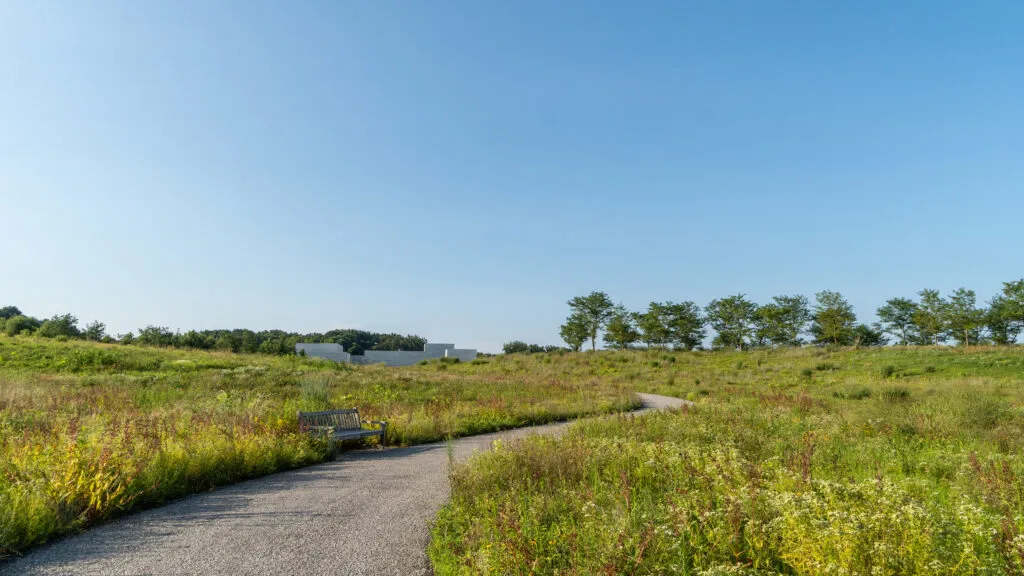
The Glenstone Museum was founded by Emily and Mitch Rales with the mission of weaving together art, architecture, and nature into one experience. In 2006 the museum opened in Potomac, MD on 150 acres of land, and has since expanded to roughly 380 acres. PWP Landscape Architecture designed the site to encourage visitors to connect with the landscape and slowly move through the rolling terrain. What better landscape to meander through, observe long viewsheds of, and nest sculptures into than native meadow? LWLA was excited to be brought on in 2016 as meadow consultants to PWP to assist in designing and converting 45 acres of turf and pasture into native meadow. Due to its large scale, varying ecological conditions, and Glenstone’s organic management preferences, this meadow was conceived of utilizing multiple strategies and phases.
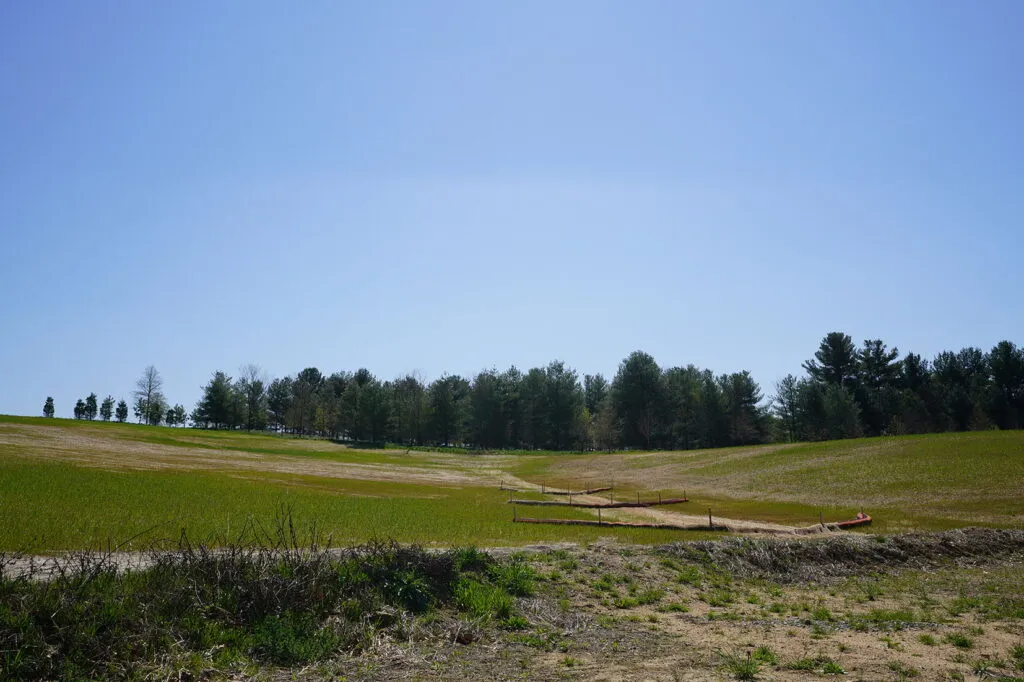
LWLA worked closely with Matthew Partain, Glenstone’s Landscape Superintendent, who was integral to the success of the meadows. Matt fully grasped the understanding that an organically prepped and managed meadow would mean that long term weed presence was inevitable. He and the whole team at Glenstone fully embraced the process, mixing seed in house, cutting back weeds by hand, mowing masterfully, and experimenting with different management methods.
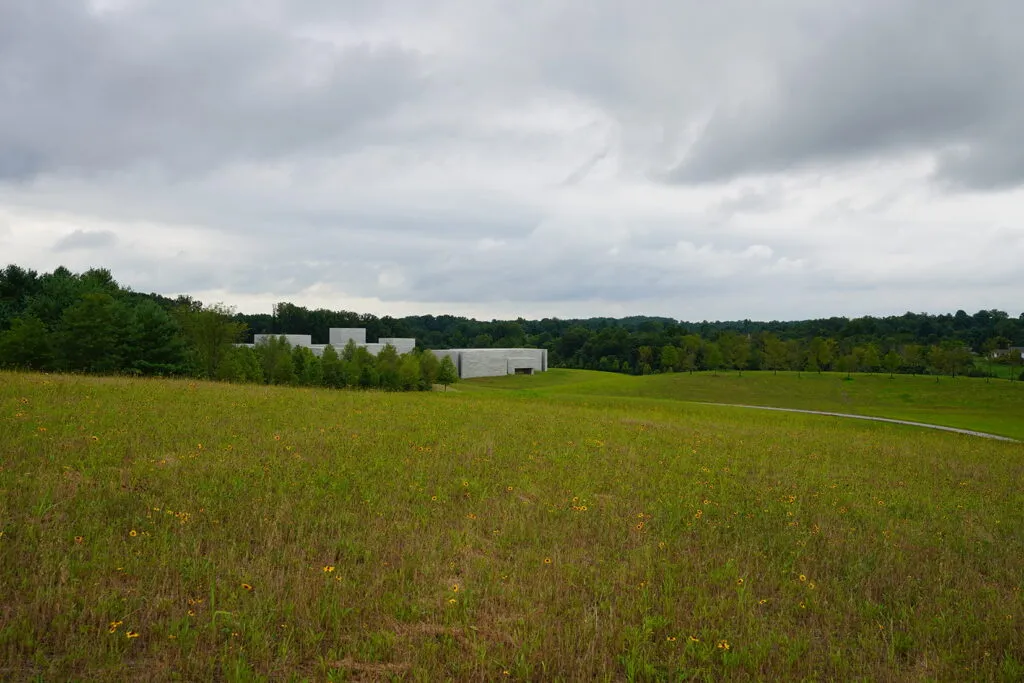
The main meadow was the first to be seeded in the summer of 2016. The existing conditions of that area were old pasture and mown turf. For the turf to meadow conversion, the ground was sod cut before hydroseeding the meadow. The old pasture was prepped with an organic vinegar-based herbicide and mown with a flail mower before being seeded with a Truax No-Till Drill Seeder.
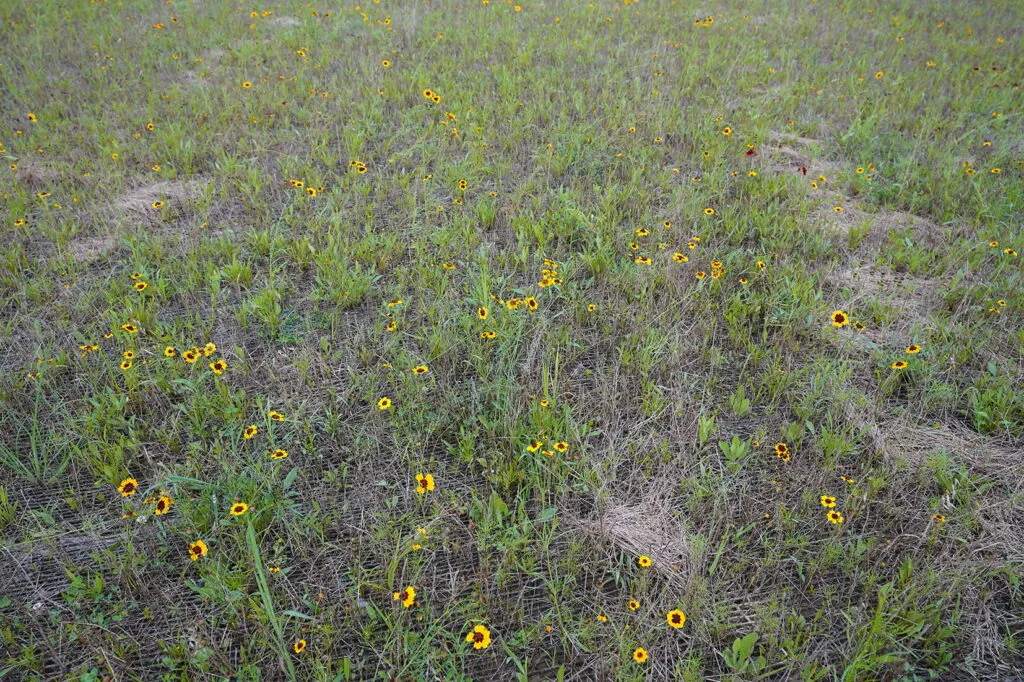
The meadow came in strong with an explosion of Tickseed (Coreopsis tinctoria) in June of 2017, followed by Black Eyed Susan (Rudbeckia hirta) in July. By 2018 the Beardtongue (Penstemon sp.) and Little Bluestem (Schizachyrium scoparium) appeared, and in 2019 Rattlesnake Master (Eryngium yuccifolium) and Narrowleaf Mountainmint (Pycnanthemum tenuifolium) had sprung up.
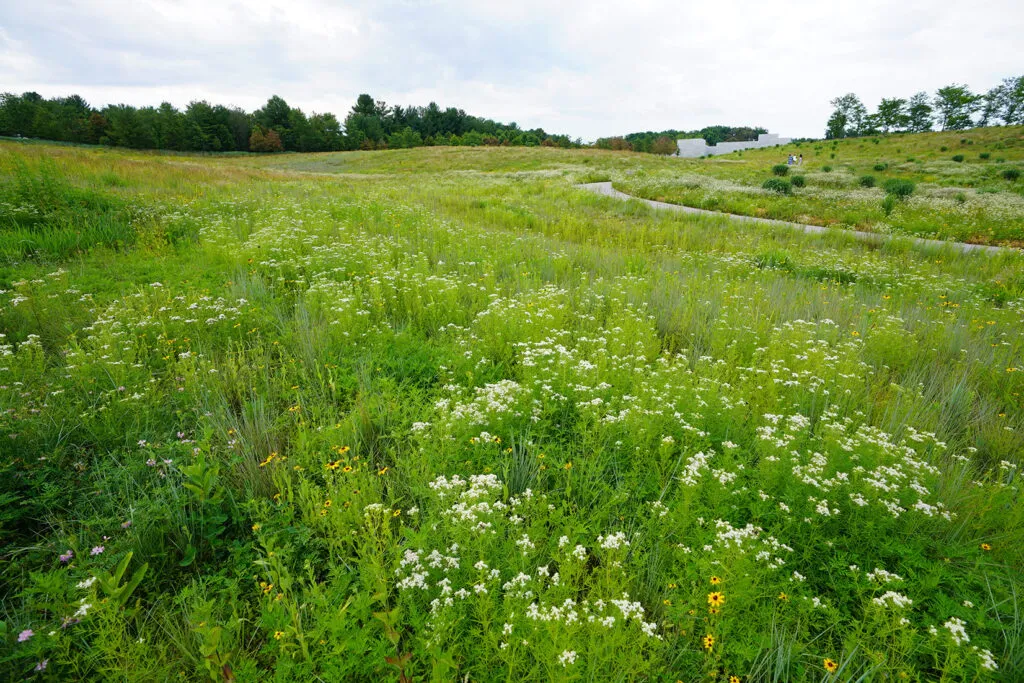
In 2020, the area that was sod cut and hydroseeded had a small and very manageable weed component. The old pasture area, on the other hand, was struggling to keep up. The weed component here was much higher and growing, likely due to the difference in pre-existing conditions and site prep. The Glenstone team took care to cut and manage the weeds, overseeding with a native mix where necessary.
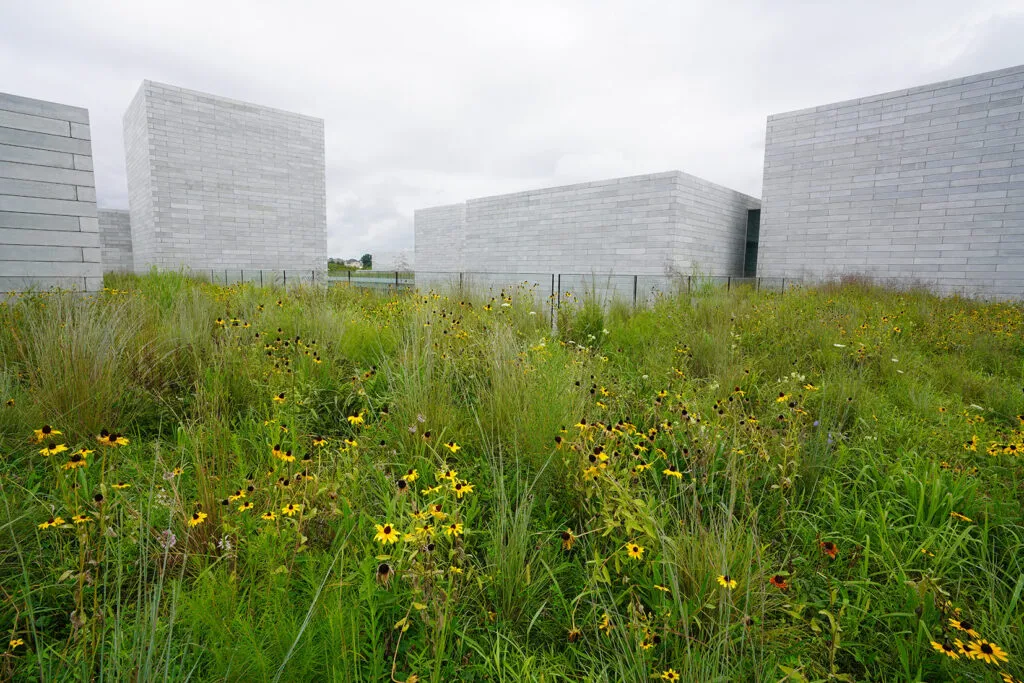
The meadows closest to The Pavilions (the newest gallery buildings designed by Thomas Phifer and Partners) were a high priority as they are observed by museum visitors from both inside and the outside of the galleries. To ensure long term success, this meadow included a high component of plugs at a dense spacing prior to seeding. The plug planting took about two weeks to install in late spring of 2017. Weeds were managed with a Garden Weasel between the planted plugs until the native seed mix was hand sown across the area. In the summer of 2018, the plugs had matured and the seeded meadow pushed out an extraordinary amount of Black Eyed Susans (Rudbeckia hirta), so much so that the management team decided to cull about 2/3rds of it prior to opening the landscape to the public. By 2019 the meadow seed and the plugs began to intermingle, appearing more cohesive and in 2020 this meadow was exceeding expectations both aesthetically and in low weed counts.
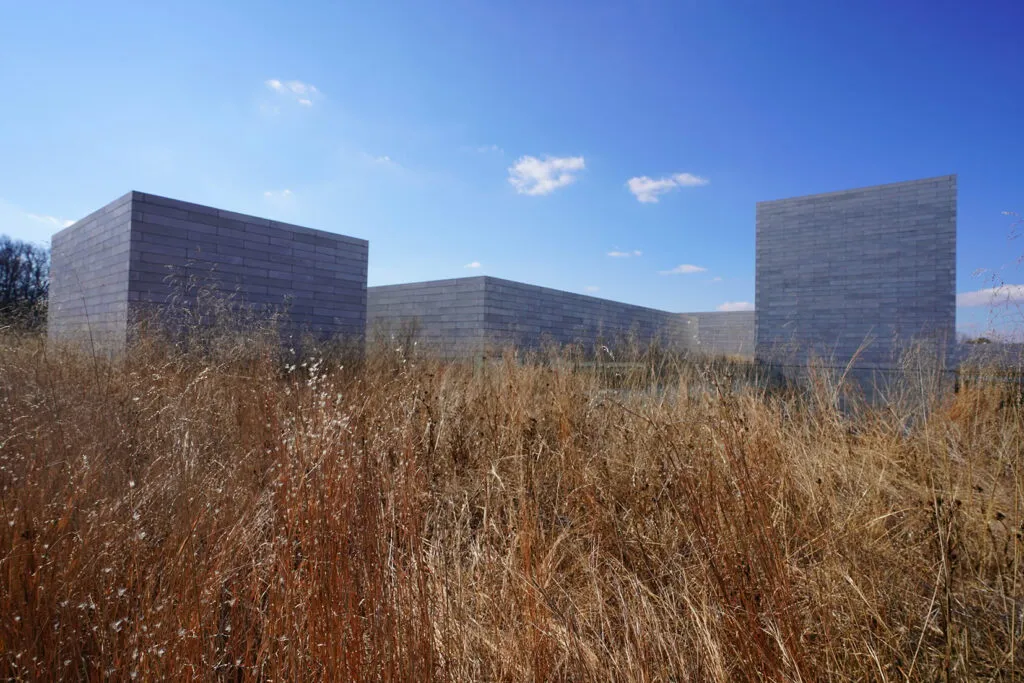
The third meadow typology at Glenstone was the shade understory area. True to Glenstone’s commitment to environmental stewardship, 8,000 trees were planted to reforest parts of the landscape.
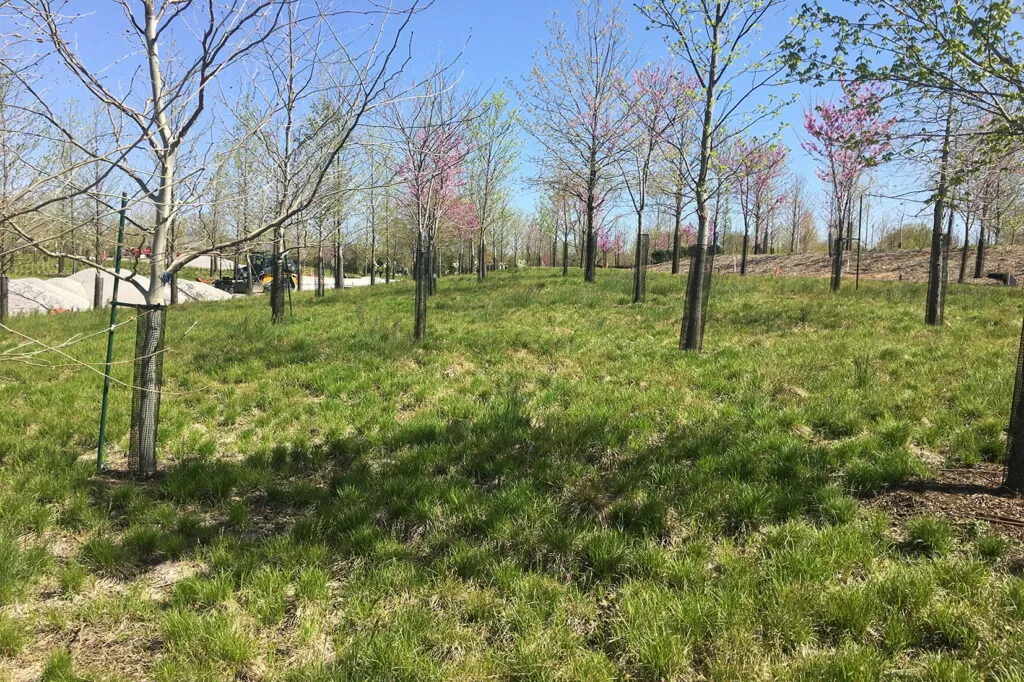
This meadow area started with bare, newly placedsoil and was seeded in 2016. Heavy weed pressure was observed in the first growing season, requiring extensive hand cutting. This is likely due to the weed seed bank in soil that was brought in with the planted trees. The meadow began to feature some promising vegetation such as Spiderwort (Tradescantia virginiana), Sedges (Carex sp.) and Beardtongue (Penstemon sp.) in the second and third growing season.

By the fourth growing season the meadow had matured to establishment. Established meadows, however, can still inherit weed problems. In 2020 the understory was invaded by Stiltgrass (Microstegium vimineum), Creeping Thistle (Cirsium arvense), and other aggressive weeds. Many of these weeds were cut by hand and overseeded with a native mix. When managing 45 acres of meadow organically, living with weeds is par for the course. It’s important to stay observant and catch problem weeds early – the goal here is not eradication, but minimization.
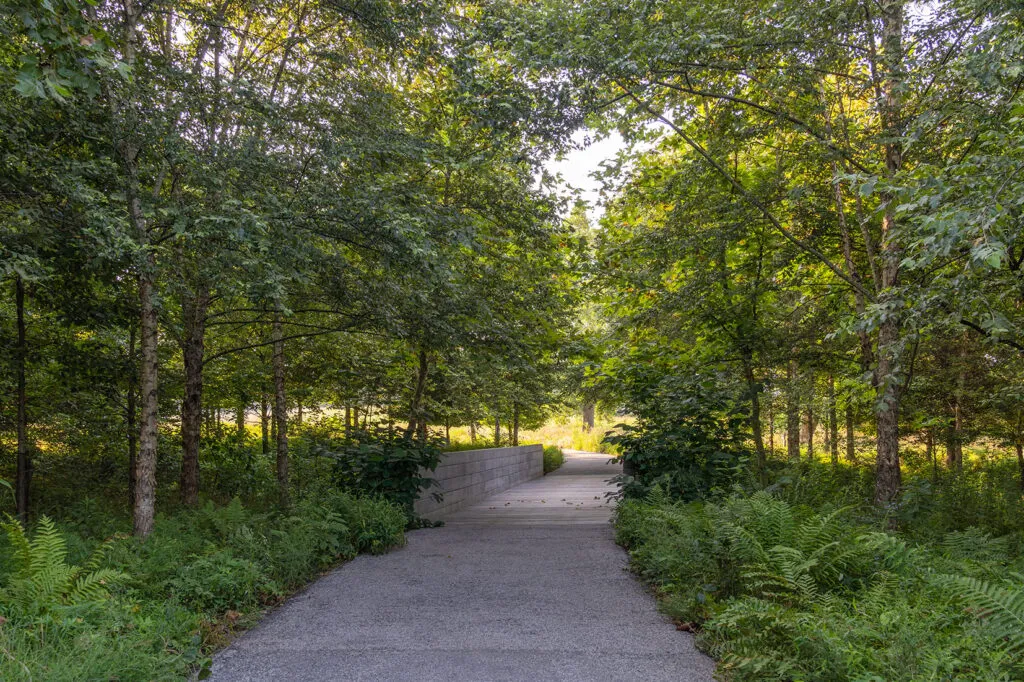
The Glenstone meadows have taught us a lot about organic meadow management and weed suppression over the years. It’s been a pleasure to partner with an organization that is committed to the stewardship of their land, and a landscape crew that is so eager to experiment and learn throughout the ever-changing processes.